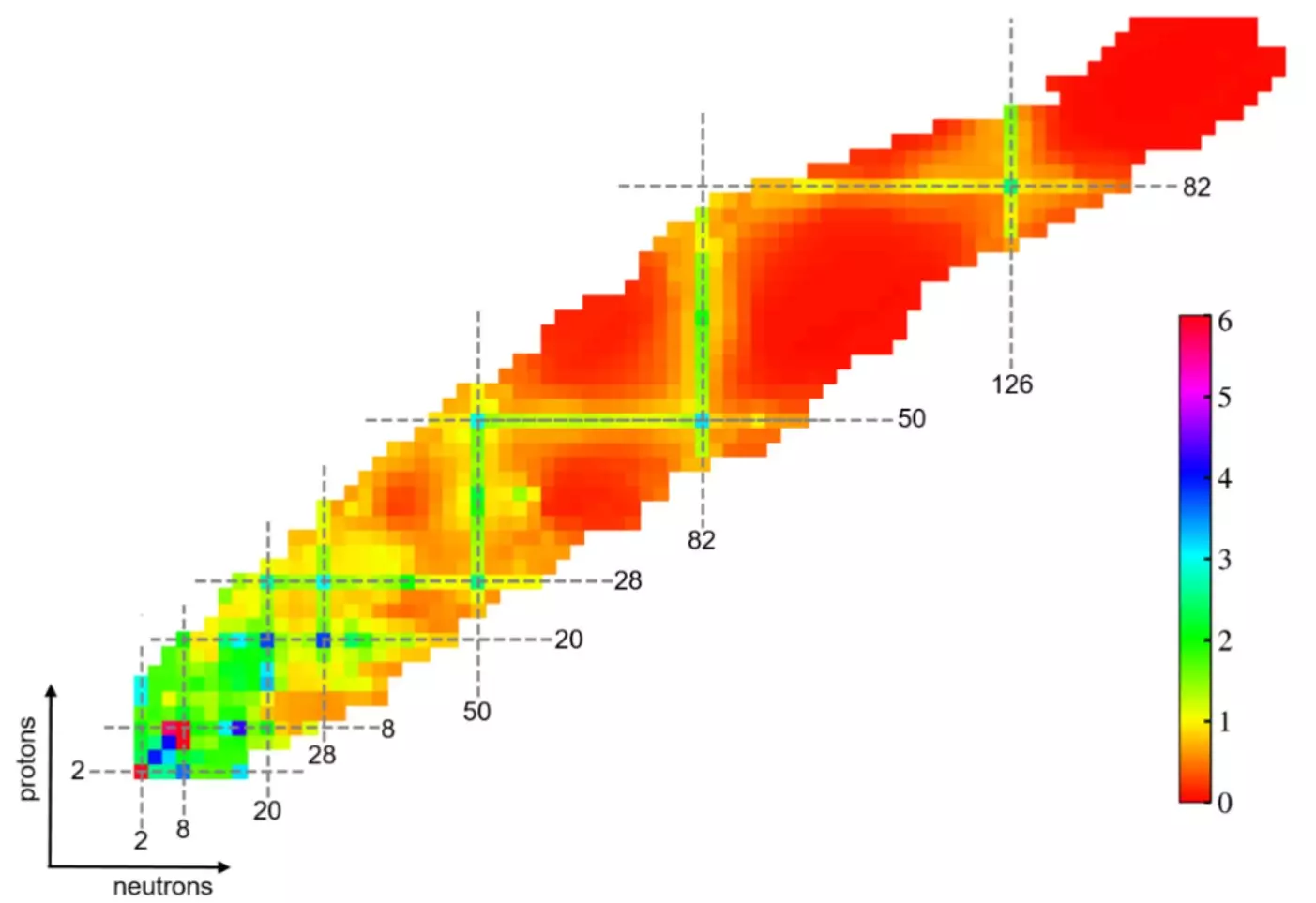Recent advancements in nuclear physics have prompted researchers to delve deeper into the shell structure of atomic nuclei, particularly those situated far from stability. A compelling study led by a research team from the Institute of Modern Physics (IMP) of the Chinese Academy of Sciences, Huzhou University, and the University of Paris-Saclay has employed a unique machine learning approach to unravel these complexities. This investigation has brought to light significant findings regarding the traditional magic numbers that define the stability of atomic nuclei, specifically focusing on oxygen-28 and tin-100.
Magic numbers—specific numbers of protons or neutrons in an atomic nucleus that confer greater stability—have long been acknowledged by physicists. Identified in the 1930s, these numbers—2, 8, 20, 28, 50, 82, and 126—play a pivotal role in understanding nuclear behavior. However, with the rise of more sophisticated analytical techniques, scientists are beginning to understand that these magic numbers may not be carved in stone. The study published in Physics Letters B highlights that while some traditional magic numbers, such as the one for tin-100, remain intact, others, like that for oxygen-28, may be disappearing. This raises critical questions about the fundamental principles governing nuclear stability.
The application of machine learning in various fields has revolutionized how data is analyzed and interpreted. In nuclear physics, this approach has showcased its promise in determining critical parameters such as the energy levels of the first excited states in nuclei and the probability of electromagnetic transitions. In the pursuit of understanding shell structure evolution, the research team harnessed modern machine learning algorithms to examine numerous nuclear features and achieve unprecedented accuracy in mapping experimental data on low-lying excited states.
As pointed out by Lyu Bingfeng, one of the study’s corresponding authors, these insights are critical for reshaping our understanding of atomic nuclei. The machine learning algorithms used in this study outperformed traditional nuclear models and other existing machine learning methodologies, yielding precise results that could not be overlooked. An essential aspect of this process was the ability to analyze complex experimental data accurately, illustrating how machine learning can enhance predictive capabilities in scientific research.
The results from this investigation indicate that the neutron magic number of 20 may not exist in oxygen-28, a revelation that challenges previous assumptions about its stability. In contrast, the research reaffirmed the resilience of the magic number 50, still observable in tin-100. These findings signify a shift in understanding—one that acknowledges the potential dynamics changing within atomic nuclei as they reach conditions beyond traditional stability.
Moreover, the research emphasizes the importance of basic nuclear properties in improving machine learning methodologies. By enhancing these algorithms, physicists can deepen their understanding of the properties of low-lying excited states. This newfound knowledge is crucial, not just for theoretical considerations but also for developing practical experimental methodologies. The study sets a foundation for future measuring ventures at rare-isotope facilities, such as China’s High Intensity heavy-ion Accelerator Facility, where insights on low-lying excited energies and electromagnetic transitions could illuminate further aspects of nuclear structure.
The implications of this study extend beyond just refining theoretical models; they beckon a recalibration of the principles underpinning nuclear physics itself. Questions surrounding the existence of core magic numbers, transformations in their stability, and the potential emergence of new magic numbers could carve pathways to new physical phenomena. By marrying traditional nuclear physics with cutting-edge machine learning, researchers are poised to break new ground in understanding the very fabric of matter.
The findings emerging from this research represent a paradigm shift in nuclear physics, suggesting that magic numbers may evolve in the face of changing conditions. As machine learning techniques continue to develop, they equip physicists with the tools to redefine our understanding of atomic nuclei and explore phenomena that could reveal new chapters in the story of the universe.


Leave a Reply
You must be logged in to post a comment.